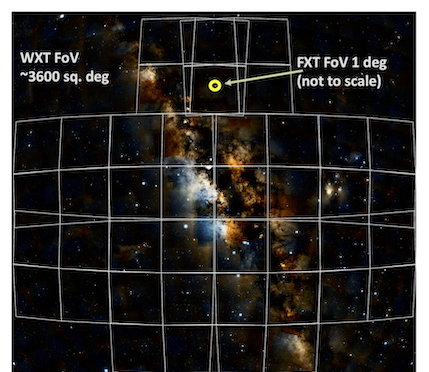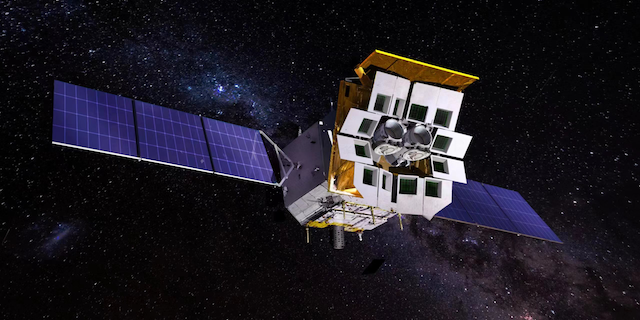By SONG Jianlan
“Einstein Probe”, an astronomical satellite designed for X-ray observation on astronomical events drastically evolving over time, was successfully sent into preset orbit by a Long March 2C rocket from China’s Xichang Satellite Launch Center located in Sichuan Province at 15:03 GMT+8 on Jan 9, 2024.

Einstein Probe, an astronomical satellite designed for soft X-ray observation on transients, is sent into its preset orbit by a Long March 2C rocket at 15:03 (GMT+8) on Jan 9, 2024. (Credit: Xichang Satellite Launch Center)
Flying at an altitude of approximately 600 km, the satellite will circle the Earth every 96 minutes and can finish monitoring the full night-sky in only three orbits. After several months of testing and calibrating, it will keep working in space for at least three years.
The Einstein Probe is a space mission of the Chinese Academy of Sciences in cooperation with the European Space Agency (ESA), the Max Planck Institute for Extraterrestrial Physics (MPE) in Germany and the French Space Agency (CNES) in France. ESA and MPE contributed the key components of the follow-up X-ray telescope (FXT) onboard. ESA also provided support for testing and calibrating the X-ray detectors and the optics of the wide-field X-ray telescope (WXT). ESA’s ground stations will be used to help download the data, while CNES provided very high frequency (VHF) ground receiving network for the real-time and fast downlink of scientific data, according to CAS. ESA participated in the project as a Mission of Opportunity.
Powered with the most state-of-the-art X-ray focusing imagery called the lobster-eye micropore optics (MPO), the new instrument can cover an unprecedentedly large field of view in the soft X-ray band and obtain high-resolution images. Inspired by the structure of lobster eyes, the MPO imager uses hundreds of thousands of square fibers to reflect and focus X-rays from a wide field of view onto its focal plane. The new satellite is anticipated to fill a gap in time-domain astronomical observation and sensitively detect the faint, weak X-ray signals from long-distance yet violent celestial events, like supernova explosions, gravitational waves, and black holes. Such violent bursts of X-rays, obscure due to their remote positions as well as the bottleneck in X-ray focusing imagery, are actually the result from drastic physical reactions occurring in the cosmos. Prominent in such events, gravitational waves and black holes (some might happen to be devouring stars) are both predicted by Einstein in his theory of general relativity, and thus the name of the satellite. The launching of the mission will pave the way for further understanding of the physics underlying these astronomical phenomena, and might help unravel some open questions.

The Field of View of WXT covers 3600 square degrees (displayed as overlaid on an optical image of the Galactic plane) (Credit: EP team)
The EP satellite carries two telescopes, the above-mentioned WXT for sky monitoring and the FXT for closer observations on significant objects identified by the former. The former covers a field of view as wide as 3,600 square degrees, far bigger than any existing counterpart X-ray focusing imagers in the world; and once an interesting object is found in the sky survey and in-orbit data processing, the latter will gaze at the chosen object to perform detailed observation. The satellite can also alert worldwide astronomical instruments, in space or on the ground, to target on an identified object for synergistic observations.

Einstein Probe illustrated as working in orbit (Credit: MicroSat)
A successful test flight of an experimental module of the WXT in August 2022 has highlighted, and raised the anticipation for, EP’s X-ray imagery combining an unprecedentedly wide field of view, high sensitivity and excellent resolution. Equipped with MPO, EP holds promise for the discovery of a large number of explosive astronomical events, including mergers of compact objects like black holes and neutron stars, and also some tidal disruption events (TDEs), in which a black hole preys on a passing by star. TDEs remain rare in X-ray observation, with only dozens identified so far. Such observations have important implications in research on star activity and the formation, evolution and merger of compact objects.
(BCAS)

